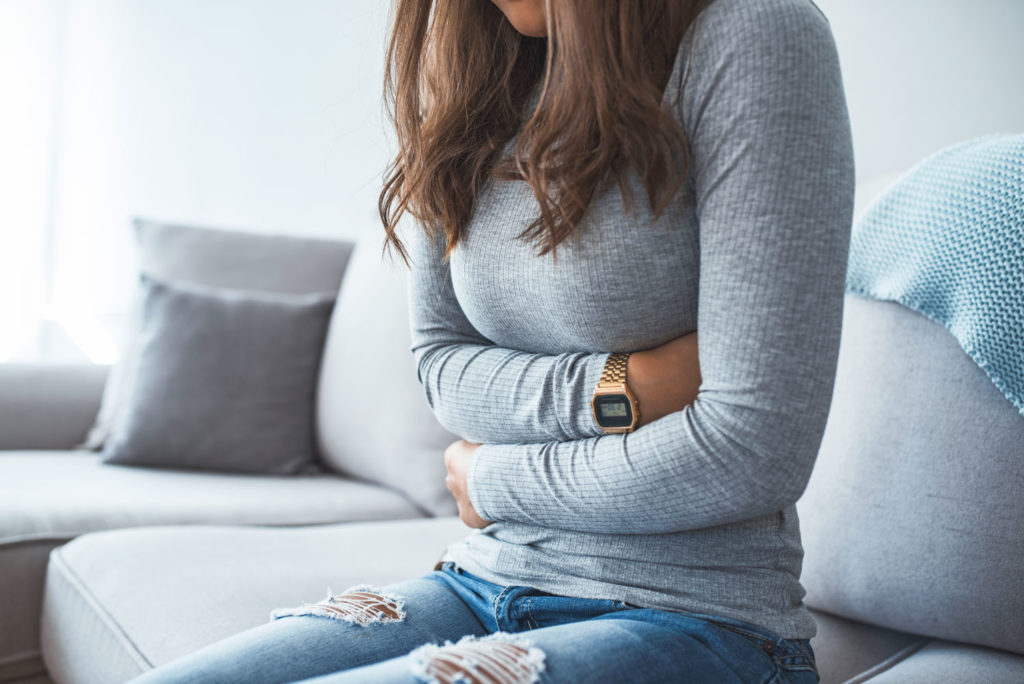The human body is a miracle of engineering, chemistry, biology, and life itself. Each person has a certain amount of control over their body, but there are a number of processes and operations that amazingly happen outside of conscious thought. Most of these subconscious happenings, such as digestion or a fight or flight response, are meant to assist most in survival not only of the individual, but the species as well. Women’s ability to menstruate is the most important of these unconscious actions because without it, the human race would cease to exist as we know it. The essential nature of menstruation, however, does not make the process easy for all women. Up to 90% of reproductive-age women suffer from painful periods. For many women menstruation can be exhausting, uncomfortable, and even excruciatingly painful. To help relieve the symptoms they are experiencing some women turn to over the counter or prescription pain medication. Unfortunately, some of these drugs can have nasty side effects which can develop into issues more serious than menstrual cramps. But there is a way for these women to find the relief they need. Since ancient times women have been utilizing cannabis for pain and it can be used very effectively to treat pain from menstrual cramps as well.
UNDERSTANDING MENSTRUAL CRAMPS
A woman’s uterus prepares itself all month by increasing estrogen to build up endometrial tissue. Then, after ovulation, a boost of progesterone helps plump up that tissue with arteries and blood in preparation to welcome an incoming embryo. When the body discovers it won’t be hosting an egg, progesterone levels decline telling the uterus to expel the now unneeded tissue. The body takes back what it can from the endometrium, shrinking the tissue and strangling its arteries. Without a proper blood supply, the endometrial tissue begins to suffocate and die and that’s when pangs of pain begin. Dead tissue sloughs off creating inflammation in the process. While progesterone was declining, inflammatory chemicals called prostaglandins were increasing. Prostaglandins peak during menstruation, unleashing inflammation from cell death, causing: pain, sensitivity, uterine contractions and spasms, diarrhea, and heavy bleeding.
Not all menstrual cramps are the same, but they all have the same source. According to the Mayo Clinic, menstrual cramps, or dysmenorrhea, are throbbing or cramping pains in the lower abdomen which occur before or during menstrual periods. The pain is often characterized as intense and continuous and can radiate to the lower back or legs. Cramps may begin anywhere from three days prior to the period and continue up to three days after. Additional ailments caused by periods include headaches, nausea, dizziness, or loose stools. Some periods are made even more painful due to endometriosis, uterine fibroids, pelvic inflammatory disease, and cervical stenosis. Some women are fortunate and only experience mild cramps, but for many others the pain can range from uncomfortable to unbearable.
TYPICAL MENSTRUAL CRAMP TREATMENTS
Because of the different causes for menstrual cramps, there are a few different traditional medicines women look to first. For those who have more mild cramps, over the counter pain relievers such as Ibuprofen and Naproxen Sodium are most commonly used. This method may be effective for some but using these medicines over extended periods of time can lead to liver and stomach issues, inflammation, and nausea. If these drugs are not strong enough to mitigate the pain, prescription NSAIDs are available. NSAIDs work by inhibiting the enzyme responsible for producing prostaglandins. This means that NSAIDs could potentially decrease all the symptoms aggravated by prostaglandins including inflammation, contractions and pain. Unfortunately, NSAIDs can also have unpleasant gastrointestinal side effects and should be used with moderation, those with certain digestive issues might want to avoid them entirely. It is important to be careful with prescription drugs, as more strength can also mean more side effects. Some women utilize hormonal birth control to reduce the effects of their menstrual cramps. These pills, injections, patches, or implants have hormones which can prevent ovulation and reduce the severity and frequency of menstrual cramps. Many women who use these methods find the help they need, but there is potential for misuse, irregular use, or faulty products. Hormones play a major role in the process of menstruation and altering them incorrectly can have side effects and sometimes worsen menstrual cramps. For women seeking relief from an alternative method, cannabis is a viable option.

CANNABIS FOR CRAMPS
Cannabis has been used to treat menstrual pain for thousands of years and medical researchers have found references dating back to early Persian and Chinese medical journals. Now with legalization, more women are rediscovering its potential. The chemicals found in cannabis, cannabinoids, work with the body’s natural endocannabinoid system to bring relief. The cannabinoids communicate with the body to create anti-inflammatory, pain relieving, muscle-relaxing effects. In particular, CBD has been reported to decrease inflammation and reduce muscle spasms. Recently scientists have discovered that CBD also inhibits a prostaglandin-producing enzyme, similar to NSAIDs, which means its anti-inflammatory benefits do not have gastrointestinal side effects. Both CBD and THC physically stop DNA from producing too much of this enzyme, thus reducing inflammation, pain, and cramps associated with menstruation. Furthermore, CBD and THC both target different receptors in the muscle tissue to reduce painful contractions and increase blood flow to oxygen-starved tissue.
SENSI PRODUCTS TO THE RESCUE
Because of the potential of both THC and CBD to help combat pain, all of Sensi’s products could address the uncomfortable condition and provide relief from menstrual cramps. It is, however, important to make sure the user gets the product that works for them. For those who get the best pain relief from THC, Sensi Chew Sativa, Sensi Chew Indica, and Sensi Chew Hybrid are all tasty chocolate caramels that have been used to treat menstrual cramps. Sensi Chew Energy is another THC infused chocolate caramel and contains 10mg of ginseng per dose to keep energy up without painful cramps. Sensi Chew Insomnia, with THC and melatonin, or Sensi Chew Insomnia Plus, with CBD and melatonin, are great for those who have trouble sleeping due to menstrual cramp pain. Users seeking a non- psychoactive way to help with menstrual cramps should look at Sensi’s CBD products: Sensi Chew CBD Platinum, Sensi Chew CBD Gold, and Sensi Caps CBD Softgels. Sensi Chew CBD Platinum contains 9mg of CBD per dose, whereas Sensi Chew CBD Gold has 4.5mg of both THC and CBD (some psychoactive effects may be felt). Sensi Caps CBD Softgels contain 25mg CBD and 1mg THC per softgel, giving the user the potential to help reduce or eliminate their menstrual pain.
“Thank you. I honestly don’t know what I would do without them !! I’ve tried it all and these are by far the best!”- NG, Mission Viejo
“Just discovered this product. It will be my go to from now on. Sensi Chews make me a better parent.” – AP, Carlsbad, CA
REFERENCES
“Menstrual Cramps.” Mayo Clinic, Mayo Foundation for Medical Education and Research, 14 Apr. 2018, www.mayoclinic.org/diseases-conditions/menstrual-cramps/diagnosis-treatment/drc-20374944.
“Menstrual Cramps.” Mayo Clinic, Mayo Foundation for Medical Education and Research, 14 Apr. 2018, www.mayoclinic.org/diseases-conditions/menstrual-cramps/symptoms-causes/syc-20374938.
Reiman, Amanda, et al. “Cannabis as a Substitute for Opioid-Based Pain Medication: Patient Self- Report.” Cannabis and Cannabinoid Research, Mary Ann Liebert, Inc., 1 June 2017, www.ncbi.nlm.nih.gov/pmc/articles/PMC5569620/.








